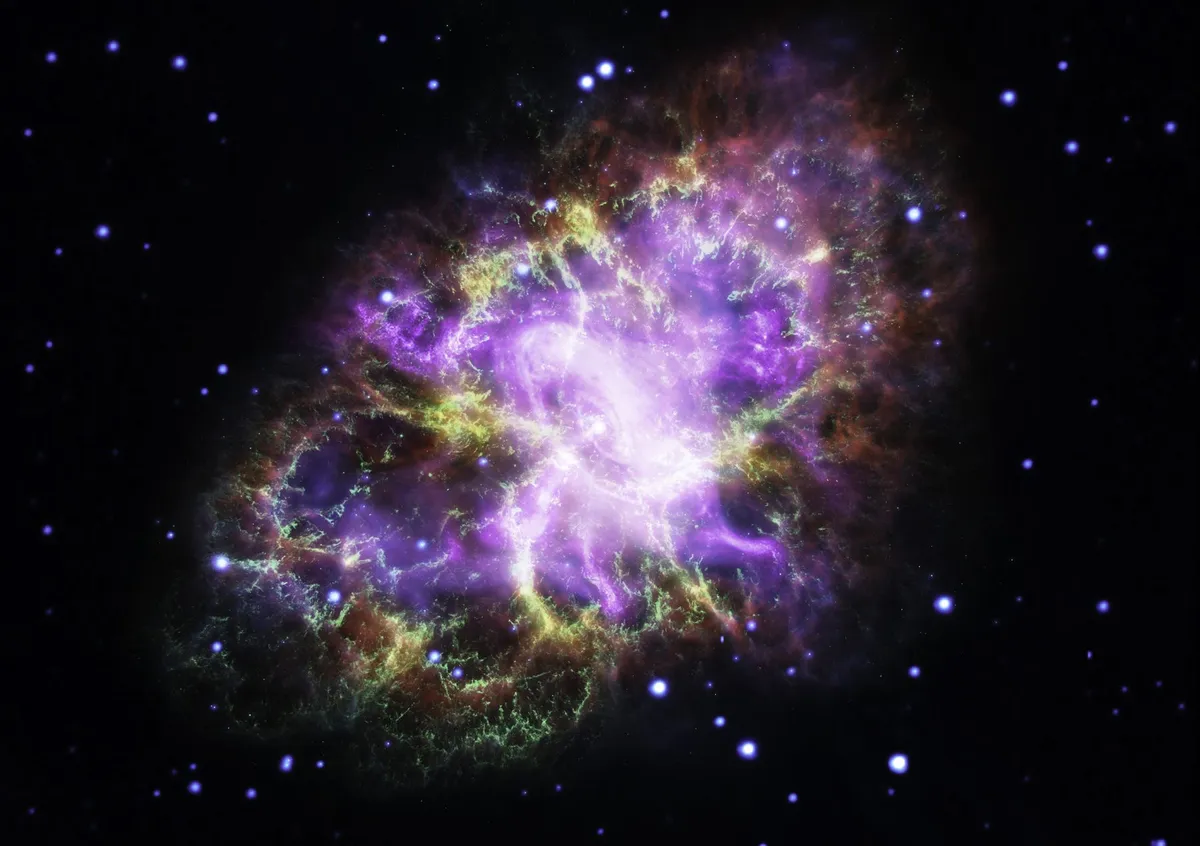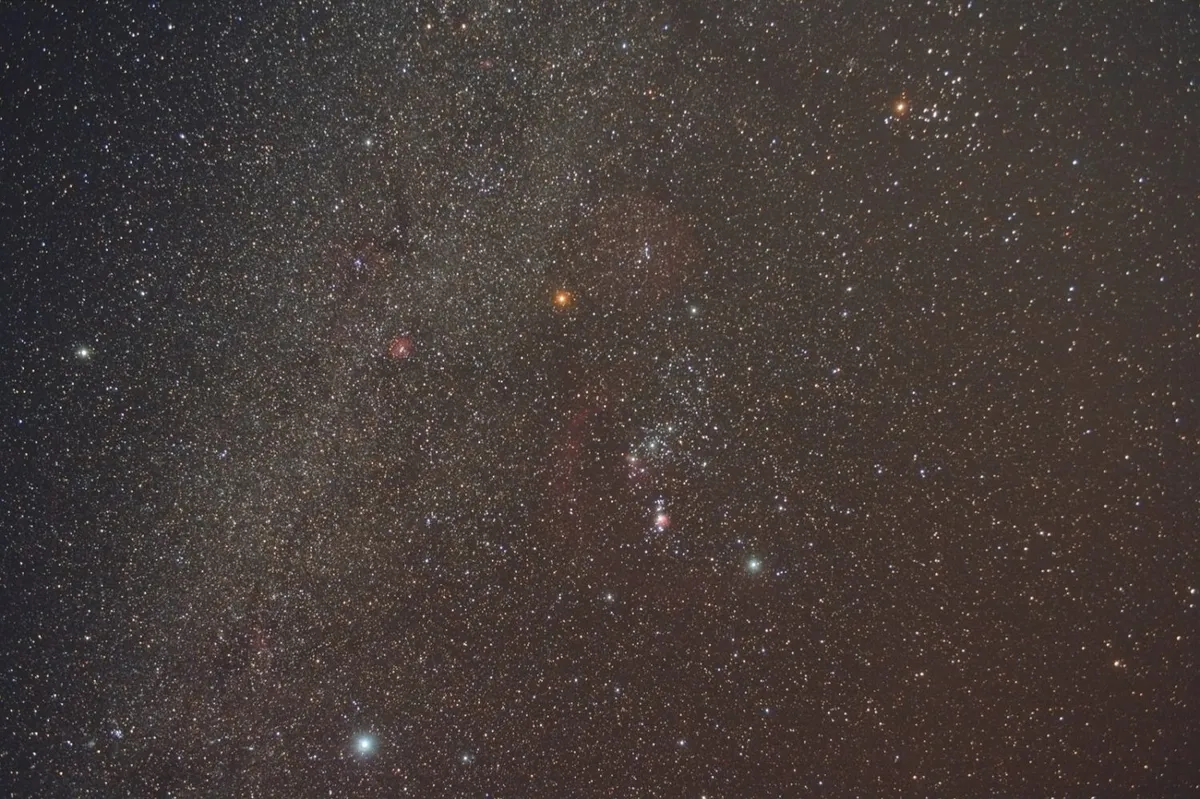Supernovae are among the most destructive events in nature. When they happen, a single star, previously lost in the glare of the combined light of a billion Suns, will flare up and outshine its entire galaxy. Studying supernovae not only provides important clues about star death, but alsodetails about the expansion of the Universe and the origins of heavy elements.
To find and observe a supernova, you will need a telescope that can see a reasonable number of galaxies, so probably 6 inches in aperture at least.
You will also need to be familiar enough with the sky that you can find them fairly quickly. Fortunately there are a number of bright galaxies out there – find our starter list at the bottom of this page – and you should survey as many as you can in one night.
You will need to become familiar with how these galaxies look if you are to detect any faint supernovae in the future. Making sketches is extremely helpful in this regard. Examine each galaxy at a medium power (say 100x) and repeat the observations as often as possible.
It has to be said that imagers have had a great deal of success here for one simple reason: the more galaxies you can survey in a night, the better your chances of scoring a supernova.
There’s a wonderful mystery surrounding supernovae. You never quite know when the next one will be, and when one does occur you have to be quick. You only have a small amount of time before it fades back into obscurity.

What are supernovae and why do they occur?
In 1054 Chinese astronomers noticed the arrival of a new star in the sky. Back then, such objects were known as ‘guest stars’. Today, we know this ‘guest’ wasn’t a new star at all, but an old one that had exploded in a cataclysmic event known as a supernova.
Supernovae occur for two reasons: either as the final death throes of a massive star or because a white dwarf has attempted carbon burning. you can find out more about the science behind supernovae in our guide: What is a supernova?
Inside these cosmic fireworks heavy elements are made, and in their afterglow these elements are returned to the interstellar medium where they will eventually become part of new stars, planets and possibly life.
Although spectacular, supernovae are rare. In our own Galaxy we would expect between one to three supernovae per century, and the last one that was visible to the naked eye occurred in 1680.
Stars like Betelgeuse (Alpha Orionis), Antares (Alpha Scorpii) and Rho Cassiopeiae are all candidates. All of these stars have started their journey towards a violent death – it’s not a question of if, just when.

Searching for supernovae: the basics
Supernova observation falls into two categories: searching and monitoring. And as visual observers, we are well placed to make valuable contributions to this exciting field of amateur astronomy.
Since supernovae are so rare, we have to search long and hard to find them. The way to do this is to examine as many galaxies as possible, searching their elusive patchy glows for new faint pin-pricks of light.
In January 2014 University College London lecturer Steve Fossey was training four undergraduate students in imaging M82, the Cigar Galaxy in Ursa Major.
In doing so they discovered SN 2014J, a supernova that was just beginning to become visible. However you find it, if you do suspect that you’ve discovered a supernova alert Guy Hurst, the British Astronomical Association’s (BAA’s) supernova patrol coordinator by emailing editor@theastronomer.org.
If a supernova is reported and it is within the magnitude range of your telescope, you should begin observing at once. Your main goal is to make as many magnitude estimates of the supernova as often as possible so that a light curve can be obtained.
For this, you will need a star chart that has suitable comparison stars and their magnitudes listed. When SN 2014J was reported the American Association of Variable Star Observers (AAVSO) produced an excellent comparison chart showing the location of the supernova in M82 and a number of good comparison stars to use.

In a log book note down the date, time, estimated magnitude and deduced magnitude. For tips keeping one, see our guide on how to keep an astronomical log book.
Personally I like to make a drawing too, as it shows the location of where the supernova was and how it changed as it faded. For example, SN 2014J had a distinctly yellowish hue that got a little stronger as it started to diminish in brightness.
As we have seen frequently throughout this series, your observations are of no use if they just sit on a bookshelf. Both the BAA and the AAVSO will be very glad of them.
Your data can be added to the growing body of observations used by professional astronomers. Despite the prevalence of digital cameras, visual observing still has a place in modern amateur astronomy.
There are plenty of ways in which to make meaningful contributions: all that is needed is a telescope, dedication and clear skies.
What are the different types of supernovae?
Type I

These occur in binary star systems when a white dwarf star is able to accumulate material from a nearby companion, causing the temperature of its core to start rising. If it can attract enough material, carbon fusion will start in the core. A few seconds later a runaway fusion reaction occurs and the star explodes, producing a supernova.
The light curve of this type of supernova is very distinctive: there’s a peak in magnitude and then the luminosity slowly drops off. Due to the nature of the explosion, Type Ia supernovae are considered excellent ‘standard candles’ for measuring distances in space.
Type II

This type of supernova is produced when a star that is at least eight solar masses begins to collapse. Once stars of this size run out of hydrogen, they start burning other elements: first carbon, then neon, oxygen and finally silicon. Eventually the core becomes too heavy and collapses, producing a supernova.
Type II supernovae fall into two subcategories depending on the light curves they produce. A II-L curve shows a linear falling off, while a II-P curve shows a distinctive plateau and the luminosity drops off at a much slower rate.
The value of light curves
The reason we want to make as many magnitude estimates of a supernova as possible is so that the data can be plotted on a graph to produce a light curve like the ones above. Not only does the light curve allow us to classify the type of supernova, with enough data professional astronomers can estimate the mass of the progenitor – and therefore determine the type of star that produced the original explosion.
You can generate your own light curve by simply plotting your magnitudes against time in a spreadsheet. Alternatively, the BAA and AAVSO websites can do this for you if you enter your observations online.
12 galaxies ripe for supernova hunting
There are many galaxies worth patrolling in your search for supernova. Use a reference guide or astronomy app to find out which will be visible around the time you are doing your observations.
1
M81, Bode's Galaxy
- Location Ursa major
- Magnitude +8.4
- Type Starburst
- Approx. distance 12 million lightyears
2
M65
- Location Leo
- Magnitude +10.3
- Type Spiral
- Approx. distance 35 million lightyears
3
M66
- Location Leo
- Magnitude +8.9
- Type Spiral
- Approx. distance 36 million lightyears
4
M61
- Location Virgo Cluster
- Magnitude +10.2
- Type Barred spiral
- Approx. distance 52 million lightyears
5
M64, Black Eye Galaxy
- Location Coma Berenices
- Magnitude +9.4
- Type Spiral
- Approx. distance 24 million lightyears
6
M101, Pinwheel Galaxy
- Location Ursa Major
- Magnitude +7.9
- Type Spiral
- Approx. distance 21 million lightyears
7
M51, Whirlpool Galaxy
- Location Canes Venatici
- Magnitude +8.4
- Type Spiral
- Approx. distance 23 million lightyears
8
M104, Sombrero Galaxy
- Location Virgo
- Magnitude +9.0
- Type Spiral
- Approx. distance 28 million lightyears
9
M84
- Location Virgo
- Magnitude +10.1
- Type Elliptical
- Approx. distance 60 million lightyears
10
M85
- Location Coma Berenices
- Magnitude +10.0
- Type Elliptical
- Approx. distance 60 million lightyears
11
M60
- Location Virgo
- Magnitude +9.8
- Type Elliptical
- Approx. distance 55 million lightyears
This guide originally appeared in the March 2015 issue of BBC Sky at Night Magazine.
